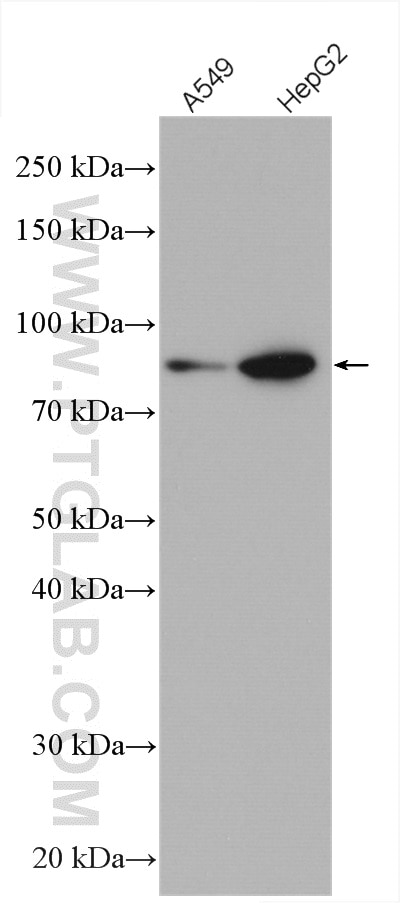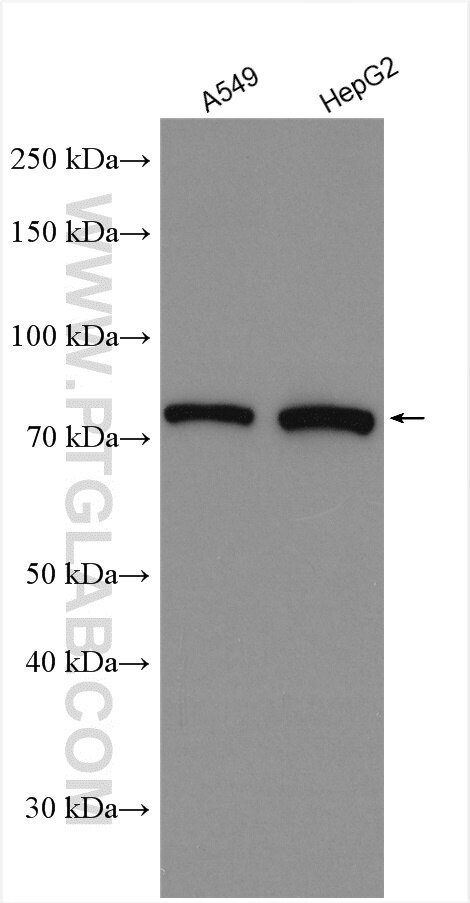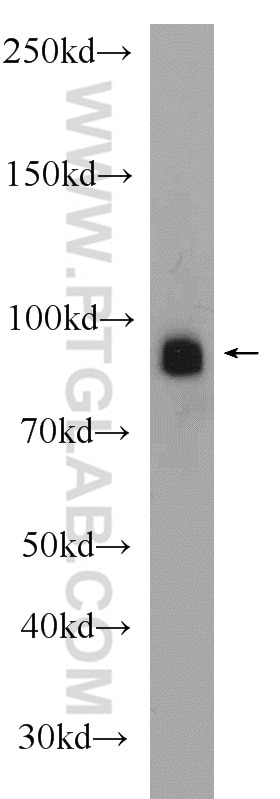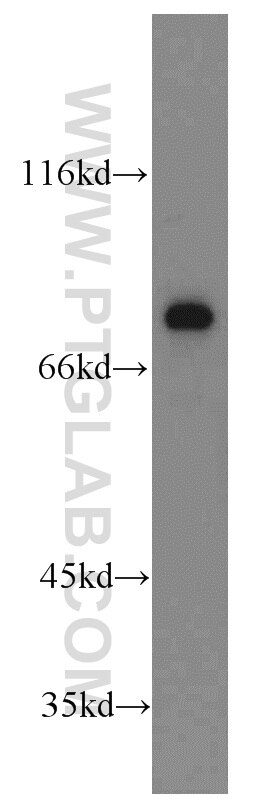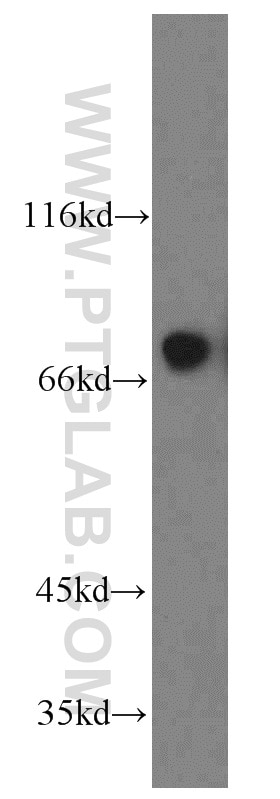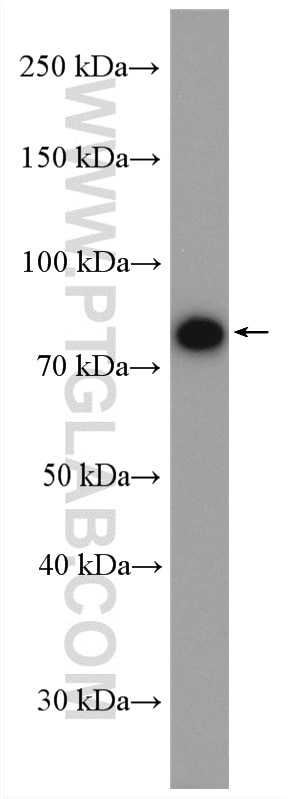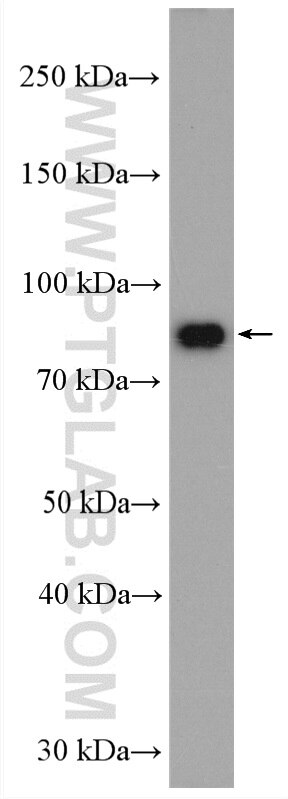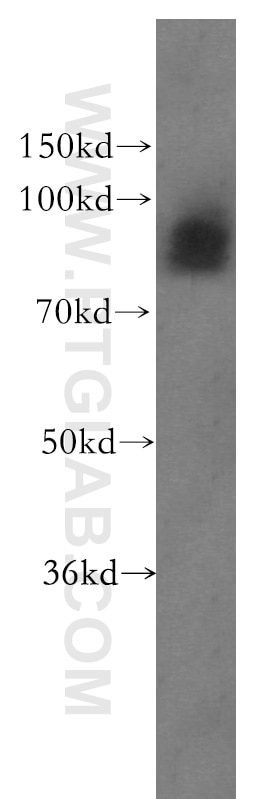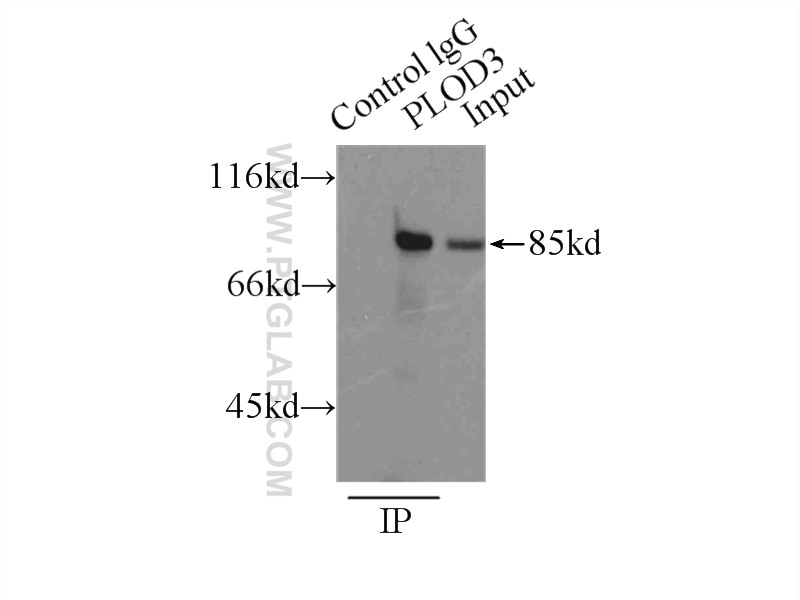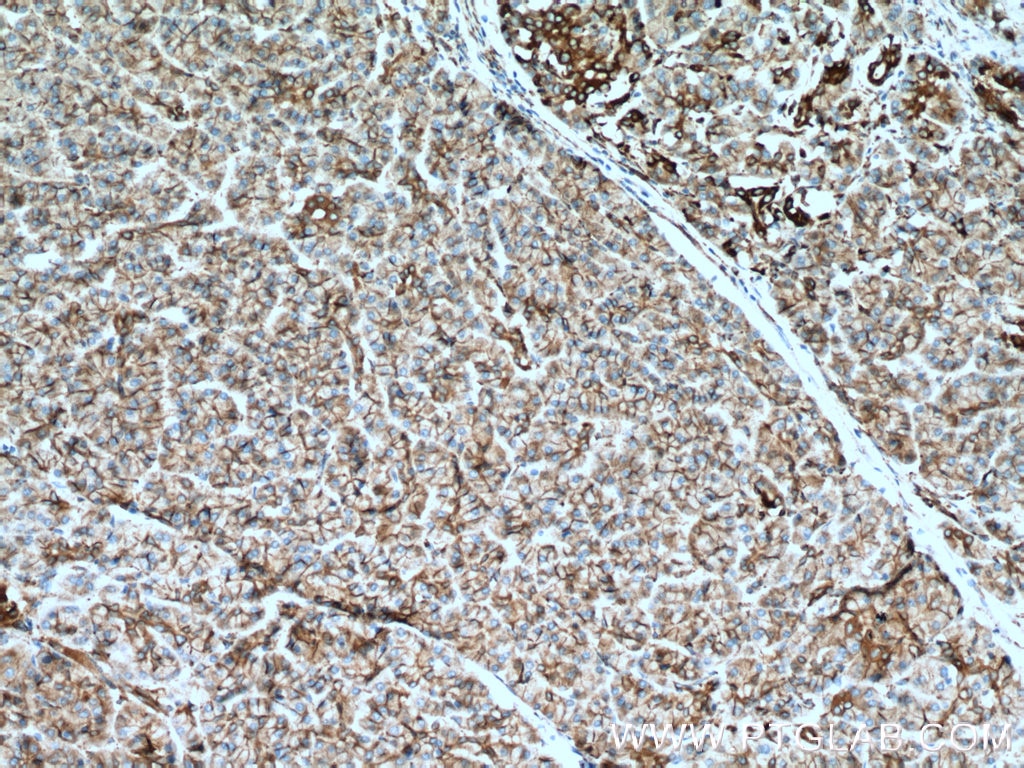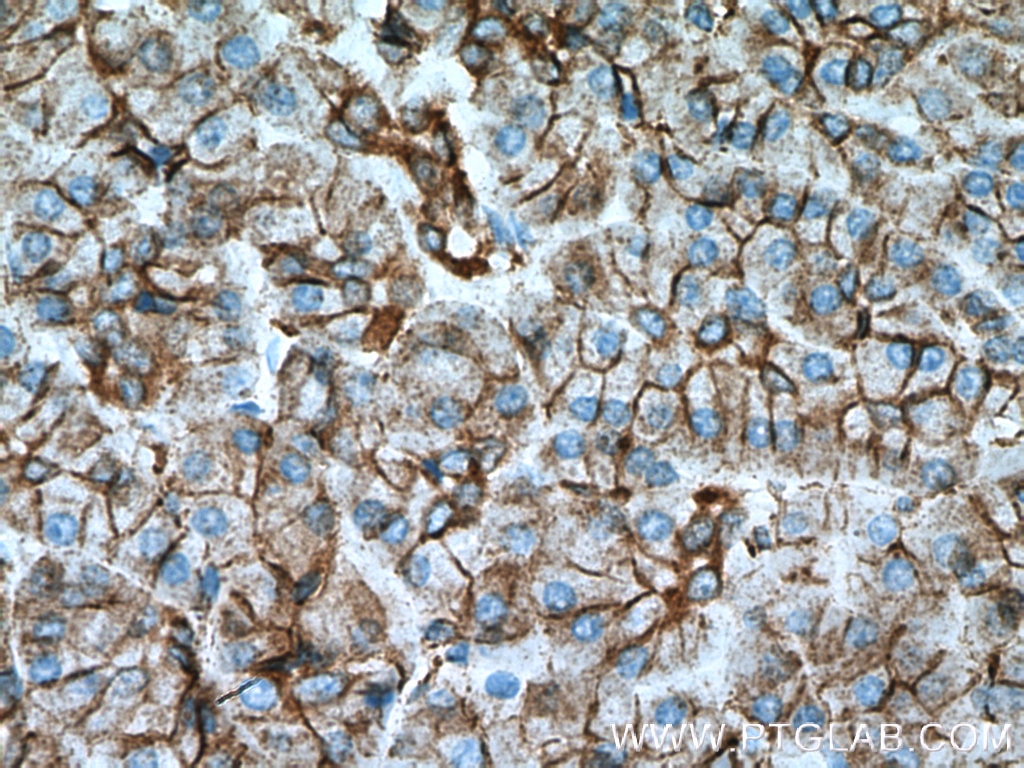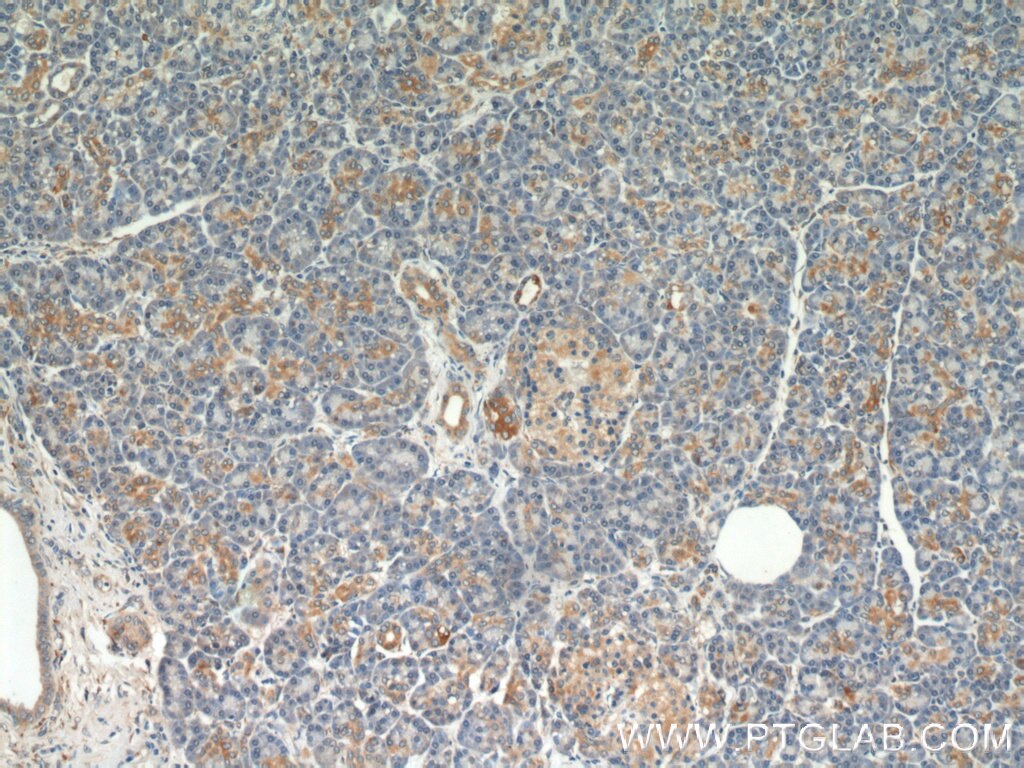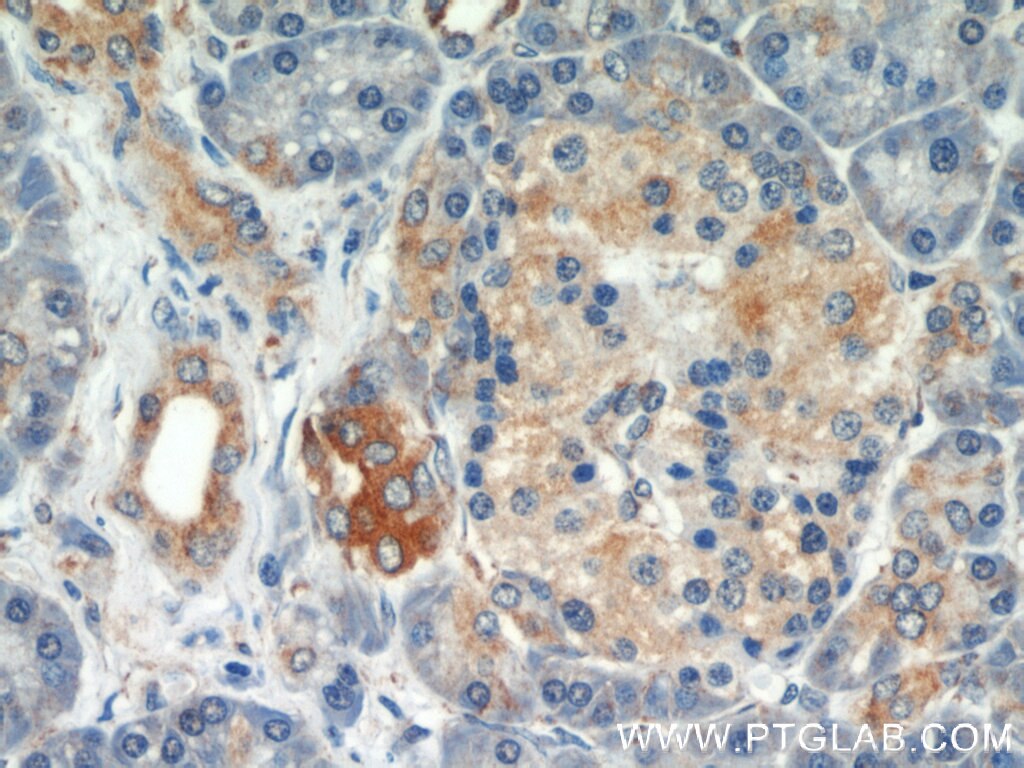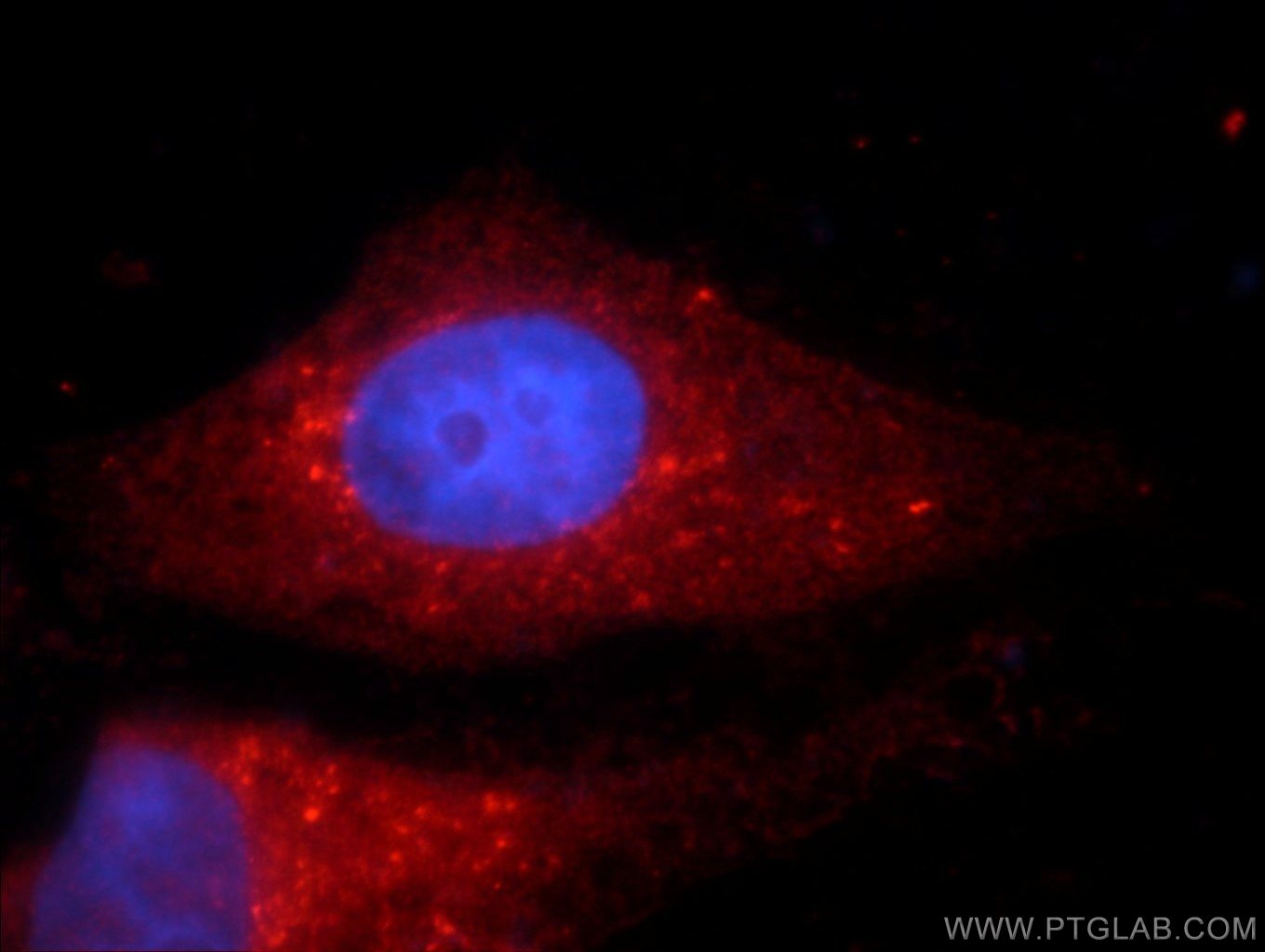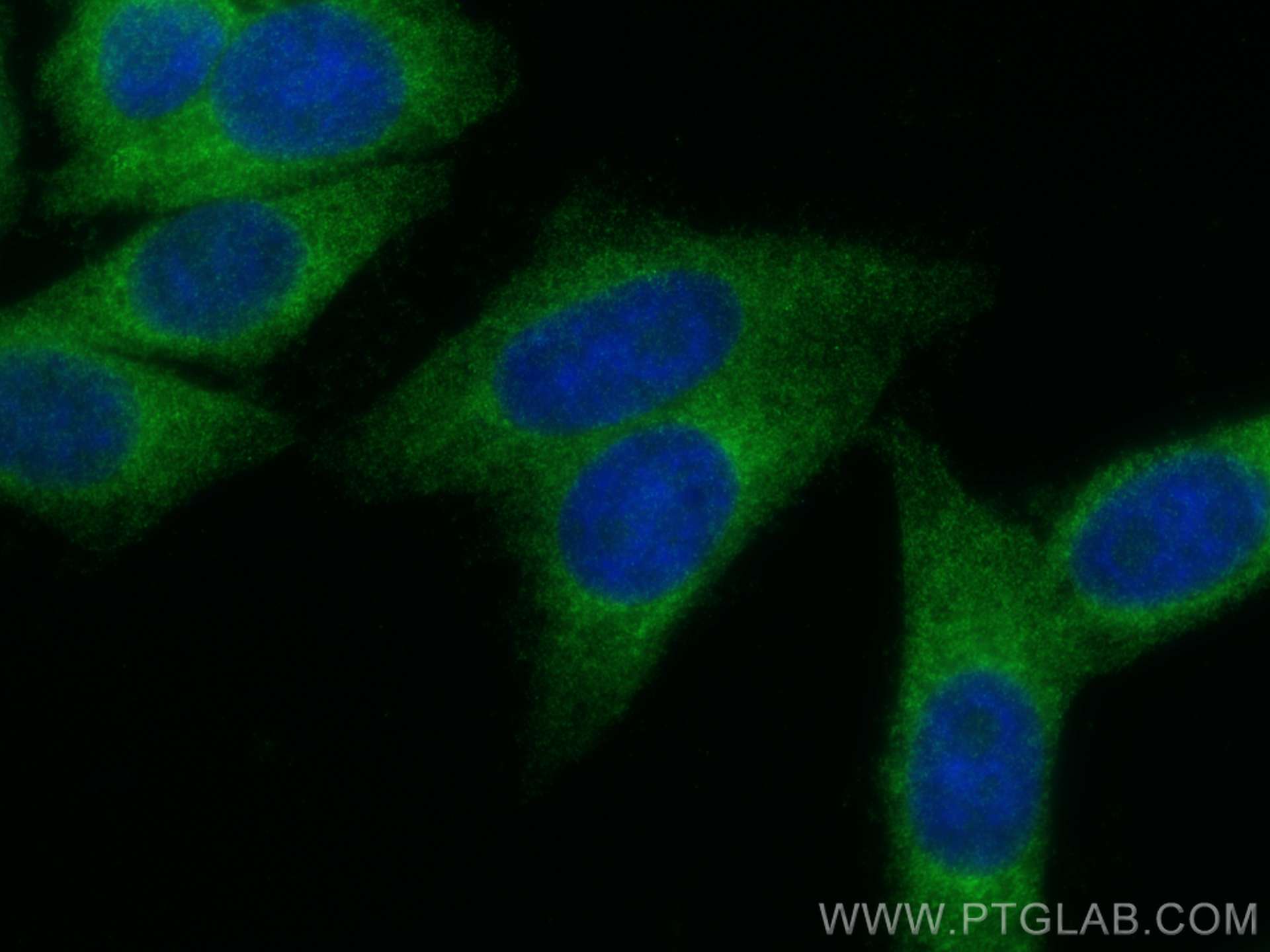- Phare
- Validé par KD/KO
Anticorps Polyclonal de lapin anti-PLOD3
PLOD3 Polyclonal Antibody for WB, IHC, IF/ICC, IP, ELISA
Hôte / Isotype
Lapin / IgG
Réactivité testée
Humain, rat, souris et plus (1)
Applications
WB, IHC, IF/ICC, IP, ELISA
Conjugaison
Non conjugué
N° de cat : 11027-1-AP
Synonymes
Galerie de données de validation
Applications testées
| Résultats positifs en WB | cellules A549, cellules HeLa, cellules HepG2, cellules PC-3, tissu placentaire de souris, tissu placentaire humain |
| Résultats positifs en IP | cellules HepG2 |
| Résultats positifs en IHC | tissu de cancer du pancréas humain, tissu pancréatique humain il est suggéré de démasquer l'antigène avec un tampon de TE buffer pH 9.0; (*) À défaut, 'le démasquage de l'antigène peut être 'effectué avec un tampon citrate pH 6,0. |
| Résultats positifs en IF/ICC | cellules HepG2, |
Dilution recommandée
| Application | Dilution |
|---|---|
| Western Blot (WB) | WB : 1:2000-1:16000 |
| Immunoprécipitation (IP) | IP : 0.5-4.0 ug for 1.0-3.0 mg of total protein lysate |
| Immunohistochimie (IHC) | IHC : 1:100-1:400 |
| Immunofluorescence (IF)/ICC | IF/ICC : 1:50-1:500 |
| It is recommended that this reagent should be titrated in each testing system to obtain optimal results. | |
| Sample-dependent, check data in validation data gallery | |
Applications publiées
| KD/KO | See 4 publications below |
| WB | See 26 publications below |
| IHC | See 7 publications below |
| IF | See 10 publications below |
| IP | See 1 publications below |
Informations sur le produit
11027-1-AP cible PLOD3 dans les applications de WB, IHC, IF/ICC, IP, ELISA et montre une réactivité avec des échantillons Humain, rat, souris
| Réactivité | Humain, rat, souris |
| Réactivité citée | rat, Drosophile, Humain, souris |
| Hôte / Isotype | Lapin / IgG |
| Clonalité | Polyclonal |
| Type | Anticorps |
| Immunogène | PLOD3 Protéine recombinante Ag1480 |
| Nom complet | procollagen-lysine, 2-oxoglutarate 5-dioxygenase 3 |
| Masse moléculaire calculée | 738 aa, 85 kDa |
| Poids moléculaire observé | 80-85 kDa |
| Numéro d’acquisition GenBank | BC011674 |
| Symbole du gène | PLOD3 |
| Identification du gène (NCBI) | 8985 |
| Conjugaison | Non conjugué |
| Forme | Liquide |
| Méthode de purification | Purification par affinité contre l'antigène |
| Tampon de stockage | PBS with 0.02% sodium azide and 50% glycerol |
| Conditions de stockage | Stocker à -20°C. Stable pendant un an après l'expédition. L'aliquotage n'est pas nécessaire pour le stockage à -20oC Les 20ul contiennent 0,1% de BSA. |
Informations générales
PLOD3, also named as LH3, forms hydroxylysine residues in -Xaa-Lys-Gly- sequences in collagens. These hydroxylysines serve as sites of attachment for carbohydrate units and are essential for the stability of the intermolecular collagen cross-links. The major function of PLOD3 in osteoblasts is to glucosylate galactosylhydroxylysine residues in type I collagen.
Protocole
| Product Specific Protocols | |
|---|---|
| WB protocol for PLOD3 antibody 11027-1-AP | Download protocol |
| IHC protocol for PLOD3 antibody 11027-1-AP | Download protocol |
| IF protocol for PLOD3 antibody 11027-1-AP | Download protocol |
| IP protocol for PLOD3 antibody 11027-1-AP | Download protocol |
| Standard Protocols | |
|---|---|
| Click here to view our Standard Protocols |
Publications
| Species | Application | Title |
|---|---|---|
Nat Commun Molecular architecture of the multifunctional collagen lysyl hydroxylase and glycosyltransferase LH3. | ||
Nat Commun Regulation of post-Golgi LH3 trafficking is essential for collagen homeostasis. | ||
Am J Hum Genet A connective tissue disorder caused by mutations of the lysyl hydroxylase 3 gene. | ||
Matrix Biol Antibodies and methods for immunohistochemistry of extracellular matrix proteins. | ||
PLoS Genet Abnormal type I collagen post-translational modification and crosslinking in a cyclophilin B KO mouse model of recessive osteogenesis imperfecta. |
